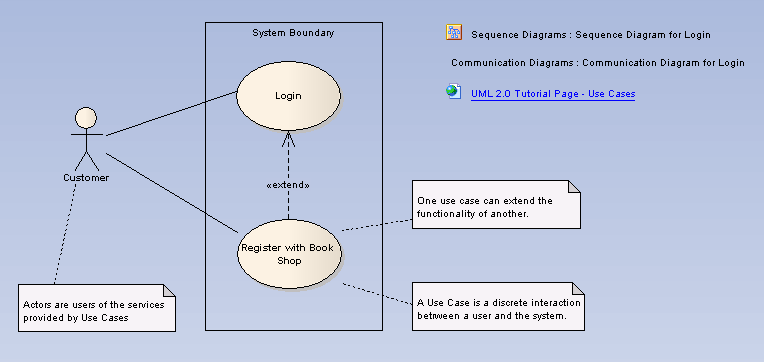
A Use Case is a UML modeling element that describes how a user of the proposed system interacts with the system to perform a discrete unit of work. It describes and signifies a single interaction over time that has meaning for the end user (person, machine or other system), and is required to leave the system in a complete state: the interaction either completed or rolled back to the initial state. A Use Case:
| · | Typically has requirements and constraints that describe the essential features and rules under which it operates |
| · | Can have an associated Sequence diagram illustrating behavior over time; who does what to whom, and when |
| · | Typically has scenarios associated with it that describe the work flow over time that produces the end result; alternative work flows (for example, to capture exceptions) are also enabled. |
Tip: Use a Use Case diagram and model to build up the functional requirements and implementation details of the system.
The following is an example Use Case model:

Toolbox Icon
![]()
See Also
OMG UML Specification
The OMG UML specification (UML Superstructure Specification, v2.0, p. 17) states:
"The specification of a sequence of actions, including variants, that a system (or other entity) can perform, interacting with actors of the system."


